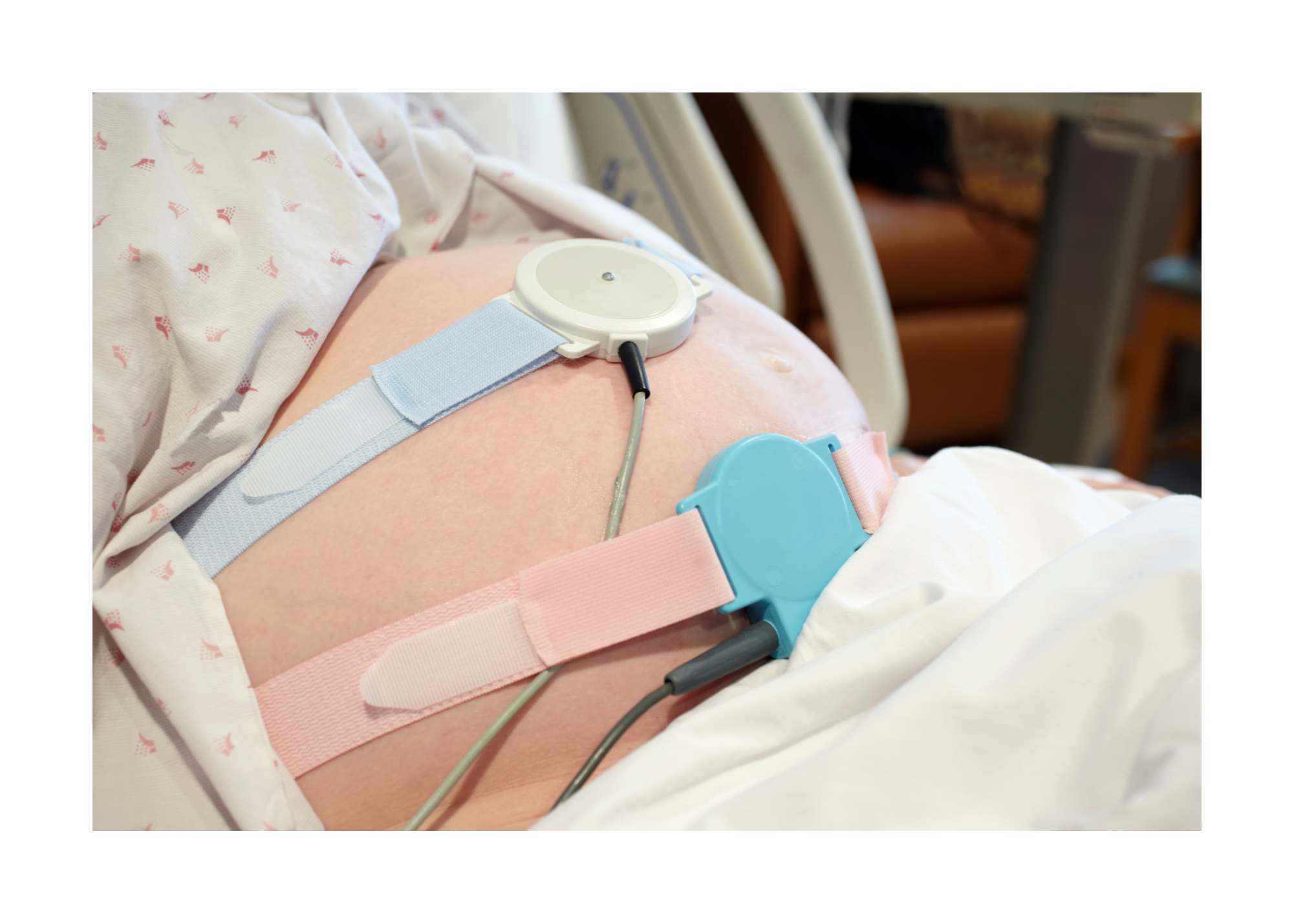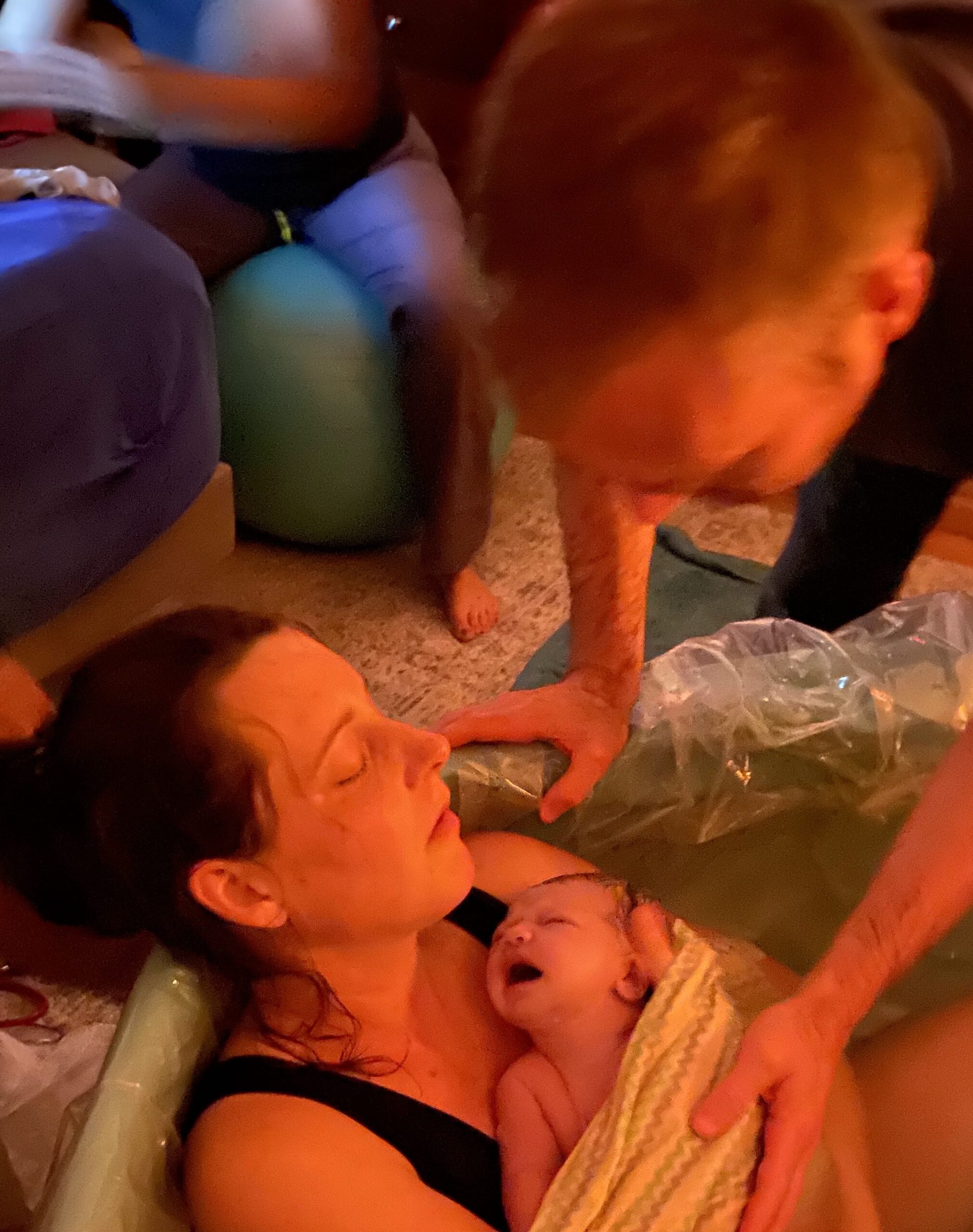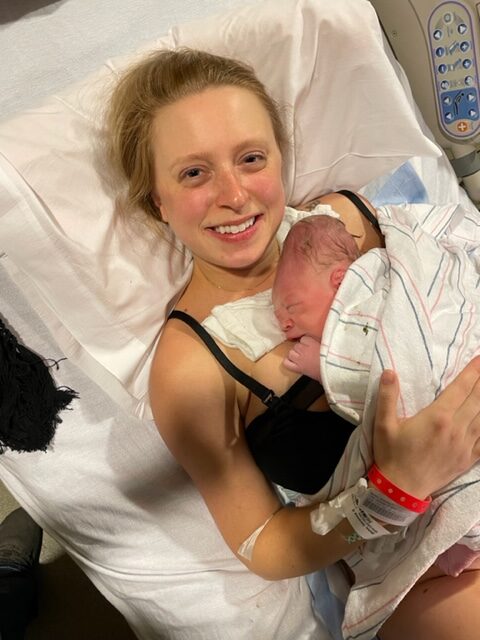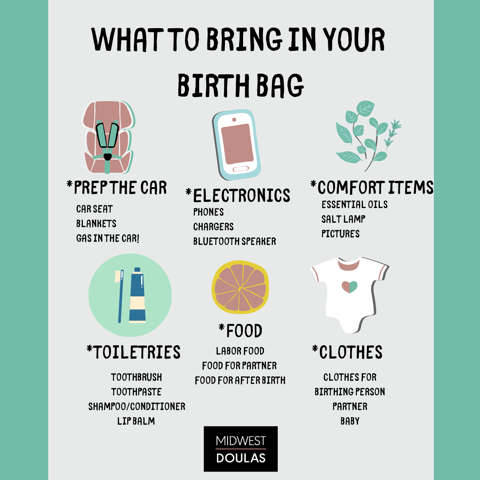“You’re Having Contractions! Can’t you FEEL them?”
Such an innocent statement is likely meant to provide comfort or confidence to the birthing person while they are hooked up to the monitors for an end-of-pregnancy NST (non-stress test). What we at Midwest Doulas have found over the years of supporting hundreds of birthing people is that this seemingly innocuous statement can wreak havoc on the psyche of a laboring person.
First, what is an NST and when would you need it?
The first fetal heart rate monitoring ever to happen through an EKG-type device (similar to our dopplers and continuous monitors now) was in 1906 but it wasn’t until 1958 that a doctor at Yale University named Dr. Hon, first noticed fetal distress in a continuous monitoring of a fetal heart rate (Hon 1958).
NSTs are used as a tool to decipher if a baby’s heart rate is reactive during the pregnancy. Reactive or non-reactive status is interpreted by your health care professional by looking at the fetal rate accelerations and decelerations as well as tracking fetal movement. One monitor is placed to read the heart rate of the baby and another monitor is tracking whether or not the pregnant person is having contractions. It’s done continuously for 20 minutes and if needed it’s extended to better interpret the findings. It’s common for the NST to be a simple office visit and they can be done at Birth Centers, Clinics, or Hospital Triage units.
People who get NSTs are usually getting them for any number of reasons including but not limited to:
- decreased fetal movement
- being post due dates
- suspected intrauterine growth restriction
- other types of concerns or high risk issues.
The list of potential reasons to have an NST is long, so we find that many of our clients end up getting them at some point in their pregnancy.
A common scenario occurs at 41 weeks gestation and an NST is administered to interpret whether the baby is still thriving and not needing intervention to help them be born (induction of labor). The pregnant person is put on the monitors and the provider then leaves them to rest while being monitored for the 20-minute testing. Midway through the provider or nurse comes in to check on how the test results are looking. They analyze the read out of the monitors and they say, “You’re having contractions! Can you feel them?”
The pregnant person thinking this is absolutely shocking and how special and unique that must be for the healthcare person to remark on it says, “Really?! I’m not feeling anything!”. Then the provider marvels “Well, you’re having them. Maybe you just have a high pain tolerance,” accompanied by a pat on the leg and a wink.
We birth professionals know what this pat on the leg and wink means. It means this is NOT IT. These are just the normal Braxton Hicks contractions that everyone has at the end of their pregnancy and MANY do not feel them. In fact, MOST do not feel them. They are just always there, chugging along and yet it’s nothing to take note of. While the statement of how the pregnant person is seemingly handling these ‘contractions’ so well is well-intentioned, its impact is far from positive.
Our clients often feel doubt of their own perceptions immediately after hearing the statement. Later on, when they begin feeling early labor contractions, which are still much milder than the contractions needed to bring forth your baby, they become panicked and their adrenaline rises. “Why are these so painful?! If this is how it’s going to be for 15 hours I can’t do this!” are common words we hear from these clients. They readjusted their baseline expectation based on that well-intentioned statement and when the real work of labor begins they often feel off-kilter and have entered the Fear, Tension, Pain cycle before they’ve even started the work of labor.
So how can you reset your expectations and stay on track with your goals?
- Ask for clarification.
If you hear a provider or health care staff member say this to you. “Is it common for most people to not feel the contractions that show up on the NST?” With some additional clarification, you’ll be resituated back to the reality that it’s quite normal and that this is indeed not the type of contraction intensity that is going to help you dilate all the way to 10 cm and birth your baby. - Call your doula!
After an NST, send your doula a text or give them a call to just recap how it went and mention anything that you heard or felt that may be shaking your confidence or having you question your perceptions. Having a talk can sometimes help re-center your expectations. - Remember you are innately capable of handling labor in whatever form you’d like to.
Whether it’s with an epidural, a waterbirth tub, or anything in between – you can do it.
If you want to read more about monitoring during labor and the evidence on whether it’s beneficial or not we highly recommend reading this Evidence Based Birth article.










